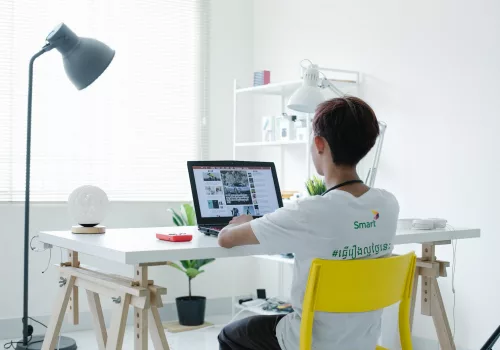Productivity at work isn’t just about working harder—it’s about working smarter. It’s the ability to use your time, energy, and resources effectively to achieve your goals while maintaining a healthy work-life balance. Whether you’re looking to meet deadlines, reduce stress, or improve overall performance, boosting productivity can transform the way you approach your work. This comprehensive guide offers 20 actionable strategies to help you excel in your professional life.
1. Set Clear Goals
Establishing clear and measurable goals is fundamental to improving productivity. Without a defined purpose, it’s easy to lose focus or waste time on low-priority tasks. Start by breaking your objectives into smaller, actionable steps and organizing them based on urgency and importance. The SMART framework—specific, measurable, achievable, relevant, and time-bound—provides a reliable way to set meaningful goals.
Revisit your goals frequently to assess progress and make adjustments as needed. Tracking milestones fosters a sense of achievement and motivates you to stay on course. This proactive approach ensures that every effort aligns with your long-term aspirations and minimizes distractions from unnecessary tasks.
Clear goals also make decision-making more efficient, enabling you to allocate your time and resources to activities that deliver the greatest value. When you’re focused on what matters most, you’ll find it easier to stay productive throughout the day.
2. Plan Your Day in Advance
Effective time management begins with a well-thought-out plan. Taking 10-15 minutes each morning or evening to outline your tasks for the day can save hours of indecision and inefficiency. Use tools like to-do lists or planners to structure your schedule, and consider frameworks like the Eisenhower Matrix to prioritize tasks based on urgency and importance.
Planning your day helps you tackle high-priority items during your peak productivity hours. For many people, this is the morning when energy levels and focus are highest. By addressing challenging tasks early, you reduce the mental load and build momentum for the rest of the day.
A structured plan also provides flexibility for unexpected events. By reviewing and adjusting your schedule throughout the day, you can maintain control and avoid feeling overwhelmed by changes.
3. Minimize Distractions
Distractions are one of the biggest productivity killers in modern workplaces. Whether it’s notifications from your phone, noisy colleagues, or frequent interruptions, identifying and addressing these distractions is essential. Start by creating a distraction-free workspace—silence notifications, use noise-canceling headphones, and set boundaries with colleagues.
Apps like Freedom or Cold Turkey can block distracting websites during work hours, helping you stay focused. Additionally, scheduling dedicated “deep work” sessions where you focus solely on complex tasks can improve concentration and output. By managing your environment and setting clear boundaries, you create conditions conducive to sustained productivity.
4. Leverage Technology and Tools
Technology offers powerful solutions for streamlining workflows and enhancing efficiency. Project management tools like Trello, Asana, or Monday.com help you organize tasks, set deadlines, and collaborate effectively with team members. Time-tracking apps such as Toggl or RescueTime provide insights into how you spend your time, enabling you to identify and eliminate inefficiencies.
Automation tools like Zapier or IFTTT can handle repetitive tasks, freeing up time for more meaningful work. By regularly exploring and adopting new tools, you ensure that your workflows remain optimized and competitive in a fast-paced work environment.
5. Practice the Two-Minute Rule
The two-minute rule is a remarkably effective strategy that simplifies task management by focusing on immediate action for small responsibilities. If a task takes less than two minutes to complete, the rule dictates that you address it immediately rather than postponing it. This approach prevents minor tasks from accumulating and potentially overwhelming your schedule. By swiftly handling these small responsibilities, you maintain momentum and free up mental space for more significant tasks.
For larger projects, the rule can be adapted by breaking them into smaller, manageable steps and allocating specific times to work on them. This incremental approach ensures steady progress while avoiding procrastination or burnout. The two-minute rule fosters a habit of action and decisiveness, cultivating a workflow where tasks are addressed promptly, reducing stress, and enabling you to sustain a productive rhythm throughout the day.
6. Prioritize Your Health
Physical and mental well-being are foundational to sustained productivity and high performance in the workplace. Regular exercise boosts energy levels, enhances focus, and improves overall resilience to stress. Pairing physical activity with a balanced diet ensures that your body has the nutrients it needs to function at its best, while adequate sleep supports cognitive functions such as memory, decision-making, and problem-solving.
Incorporating stress-management techniques like mindfulness, yoga, or deep breathing exercises can further bolster mental clarity and emotional stability. These practices help you remain calm under pressure, enabling you to navigate challenges more effectively. Neglecting health, on the other hand, often leads to burnout, reduced concentration, and diminished efficiency. By making self-care a priority, you invest in your long-term ability to excel, equipping yourself with the stamina and focus needed to tackle professional challenges head-on.
7. Batch Similar Tasks
Task batching is an efficient technique that involves grouping similar activities together and addressing them during dedicated blocks of time. By focusing on one category of tasks at a time—such as responding to emails, making phone calls, or completing administrative work—you minimize the cognitive strain caused by frequent context switching. This focused approach allows you to work more efficiently and maintain a steady rhythm.
Batching tasks is particularly beneficial for repetitive or routine responsibilities that can otherwise disrupt your workflow if handled sporadically. For example, setting aside specific times during the day to check and respond to emails ensures that this activity doesn’t interfere with more critical tasks. By streamlining your workflow through batching, you free up valuable mental energy and time, enabling you to dedicate more attention to high-priority projects and creative endeavors.
8. Use the Pomodoro Technique
The Pomodoro Technique is a highly effective time management strategy that promotes sustained focus and productivity through structured intervals. Under this method, you work for a set period—traditionally 25 minutes—followed by a short 5-minute break. After completing four intervals, or “Pomodoros,” you take a longer break of 15-30 minutes to recharge. This cyclical approach prevents mental fatigue, maintains sharpness, and fosters a consistent workflow throughout the day.
Customizing the Pomodoro intervals to suit your tasks and personal preferences can further enhance its effectiveness. For instance, complex tasks may require longer focus periods, while simpler activities might benefit from shorter cycles. By balancing intense focus with regular rest, the technique helps you sustain peak performance and avoid burnout, making it a versatile tool for managing diverse workloads.
9. Delegate Effectively
Delegation is a critical skill for maximizing productivity, especially in team-oriented environments. By identifying tasks that can be managed by others and assigning them to capable colleagues, you free up your time for higher-value responsibilities that align with your expertise and priorities. Delegating also fosters collaboration and empowers team members by giving them opportunities to contribute and grow.
Clear communication is essential when delegating tasks. Providing detailed instructions, setting expectations, and establishing timelines ensure that the delegated work meets the desired standards. Regular follow-ups help monitor progress and address any challenges that arise. Effective delegation not only enhances your productivity but also strengthens team dynamics, enabling collective success and a more efficient workflow.
10. Stay Organized
An organized workspace is fundamental to clarity and efficiency, acting as the backbone of a productive environment. A cluttered desk or disorganized digital space can distract you, create unnecessary stress, and waste valuable time searching for items or information. By regularly decluttering your physical and digital environments, you pave the way for smoother workflows and greater focus. This involves not only cleaning up visible spaces but also creating structured systems for storing files and managing documents. For example, labeled folders, categorized drawers, and clearly defined digital storage solutions can simplify access and reduce mental load.
Digital tools like Evernote or Notion are invaluable for keeping track of tasks, projects, and information. These platforms allow you to organize your notes, deadlines, and reference materials in a centralized location, reducing the chaos of scattered files. Implementing color-coded labels, tags, or priority markers can make retrieval and updates even more seamless.
Maintaining a tidy environment is not just about aesthetics; it directly influences your mindset. A clean, orderly workspace fosters a sense of control and calm, helping you approach tasks with confidence and clarity. By dedicating a few minutes daily to organizing your environment, you set the stage for sustained productivity and a more satisfying work experience.
11. Limit Multitasking
Multitasking often undermines productivity by fragmenting your focus and increasing the likelihood of errors. When you divide your attention across multiple tasks, your brain struggles to allocate resources effectively, leading to diminished quality and slower progress on each task. Instead, adopting a single-tasking approach allows you to concentrate fully on one activity at a time, producing better results and achieving a sense of accomplishment with each completed task.
Time-blocking is an invaluable technique for embracing single-tasking. By allocating specific periods in your schedule for individual activities, you ensure undivided attention and avoid the mental strain of switching contexts. This structured approach not only boosts efficiency but also instills a rhythm to your workday that aligns with your natural energy levels, helping you maintain a steady and sustainable pace.
Moreover, focusing on one task at a time cultivates mindfulness, a state of heightened awareness and presence in the moment. This improved mental clarity enhances your problem-solving abilities, creativity, and overall performance. By resisting the temptation to multitask, you pave the way for deeper engagement with your work and long-term productivity gains.
12. Take Regular Breaks
Breaks are not just a luxury but an essential component of sustaining energy, focus, and mental clarity throughout the workday. Continuous work without rest can lead to diminishing returns, with mental fatigue impairing creativity and decision-making abilities. Incorporating short, intentional breaks into your routine allows your brain to recharge and improves overall performance.
During breaks, engage in activities that rejuvenate both your body and mind. Stretching relieves tension in your muscles, especially if you’ve been sitting for extended periods. Hydrating is equally important, as dehydration can exacerbate feelings of lethargy and reduce cognitive function. Stepping outside for fresh air provides a change of scenery and a mental reset, which often sparks new ideas and enhances problem-solving capabilities.
Breaks also help prevent burnout by creating natural intervals of rest in your day. By returning to work with a refreshed perspective, you can approach tasks with renewed focus and efficiency. Incorporating these moments of pause ensures that your productivity remains consistent and sustainable over the long term.
13. Set Boundaries
Setting boundaries is crucial for protecting your time and maintaining a healthy work-life balance. Without clear limits, it’s easy to overcommit or allow work to encroach on personal time, leading to stress and eventual burnout. Learning to say no to unnecessary tasks and commitments is an essential skill that prioritizes your well-being and ensures your energy is directed toward meaningful goals.
Communicating your availability to colleagues, managers, and clients helps manage expectations and reduces the likelihood of last-minute demands disrupting your schedule. For example, establishing specific hours for meetings or task completion ensures you have uninterrupted time to focus on critical responsibilities. By delineating these boundaries, you create a structure that supports both professional productivity and personal fulfillment.
Boundaries are not only about restricting external demands but also about fostering self-discipline. Committing to defined work hours and resisting the urge to overwork allows you to recharge and maintain long-term effectiveness. A balanced approach to boundaries cultivates a sustainable work environment that prioritizes both accomplishment and well-being.
14. Eliminate Procrastination
Procrastination is a productivity killer that can create unnecessary stress and hinder progress. Overcoming it requires understanding its root causes, such as fear of failure, perfectionism, or a lack of motivation. Once identified, these barriers can be addressed through targeted strategies that build momentum and encourage action.
One effective method is breaking tasks into smaller, manageable steps. Tackling a single component of a larger project makes the work feel less daunting and provides a clear starting point. Techniques like the “5-minute rule,” which involves committing to a task for just five minutes, can help you overcome initial resistance and build momentum. Often, beginning is the hardest part, and once you’re engaged, completing the task becomes significantly easier.
Creating a structured environment also helps reduce procrastination. Eliminate distractions, set specific deadlines, and use tools like timers or productivity apps to stay focused. By consistently addressing procrastination, you develop habits that promote efficiency and reduce the stress associated with unfinished work.
15. Reflect and Improve
Reflection is a powerful tool for personal and professional growth. Regularly evaluating your work habits and performance helps identify strengths to build upon and areas requiring improvement. This practice encourages mindfulness, allowing you to be intentional about how you approach your tasks and interactions.
At the end of each day or week, take a few moments to review your accomplishments and challenges. Consider what strategies worked well and where adjustments might enhance your productivity. For instance, if a specific time management technique yielded great results, plan to incorporate it more consistently. Similarly, if certain distractions repeatedly disrupted your workflow, develop actionable solutions to address them.
Reflection also fosters a growth mindset, encouraging continuous learning and adaptation. By acknowledging progress and embracing lessons from setbacks, you cultivate resilience and set the stage for long-term success. Consistent self-assessment ensures that you’re always optimizing your productivity strategies and striving for excellence.
16. Foster a Positive Work Environment
A positive work environment is essential for morale, collaboration, and sustained productivity. When you feel supported and engaged, it’s easier to stay motivated and focused on your goals. Building strong relationships with colleagues fosters a sense of community and shared purpose, enhancing teamwork and reducing stress.
Personalizing your workspace can also contribute to a more enjoyable work atmosphere. Adding elements like motivational quotes, plants, or personal photos creates a space that inspires focus and creativity. A tidy and organized environment further reduces distractions and promotes mental clarity, making it easier to stay productive.
Celebrating achievements—both individual and team-based—reinforces positive behaviors and cultivates a culture of recognition and appreciation. By fostering an environment that values support and encouragement, you set the foundation for higher engagement and improved performance across the board.
17. Limit Meetings
Meetings are often necessary but can quickly become time-consuming if not managed effectively. To maximize productivity, ensure that meetings are scheduled only when essential and have a clear agenda and purpose. Keeping meetings concise and inviting only relevant participants helps maintain focus and reduces wasted time.
Replacing some meetings with email updates or collaborative tools like shared documents can save significant time while still achieving the desired outcomes. For example, using project management software to track progress or communicate updates eliminates the need for frequent check-ins.
When meetings are unavoidable, prepare in advance to ensure discussions are productive and goal-oriented. By limiting unnecessary meetings, you free up valuable time to concentrate on priority tasks and maintain momentum in your work.
18. Stay Motivated
Motivation is the driving force behind consistent productivity. Maintaining it requires both external and internal strategies. Setting rewards for completing tasks or reaching milestones provides tangible incentives to stay focused and driven. Whether it’s taking a break, enjoying a treat, or celebrating a small win, these rewards reinforce positive habits and keep you engaged.
Surrounding yourself with motivational content, such as inspiring books, podcasts, or visual reminders, can also reignite your passion for work. Revisiting your purpose or long-term goals helps maintain perspective, reminding you of the bigger picture and why your efforts matter.
Motivation thrives on progress, so regularly tracking and acknowledging your achievements is crucial. Celebrating even minor successes builds momentum and fosters a sense of accomplishment, fueling continued effort and enthusiasm for future challenges.
19. Continuously Learn and Adapt
Staying productive in today’s fast-paced work environment requires a willingness to embrace change and a commitment to ongoing learning. Productivity isn’t static; it evolves as new tools, methods, and challenges emerge. To remain efficient, explore the latest advancements in technology, stay informed about industry trends, and seek opportunities to develop new skills. Whether it’s attending a webinar, enrolling in a course, or learning a new software program, continuous education equips you with the resources to tackle complex tasks more effectively.
Adaptability is equally crucial. The ability to pivot in response to changing circumstances or unexpected challenges strengthens resilience and ensures you remain productive under pressure. For instance, learning to implement feedback constructively or adjusting to new workplace technologies without resistance demonstrates adaptability in action. Investing in professional growth and maintaining a flexible mindset prepares you to thrive in evolving professional landscapes and to seize opportunities for advancement.
Cultivating a habit of learning not only enhances your technical abilities but also boosts confidence and job satisfaction. Embracing change with a positive outlook transforms challenges into growth opportunities, reinforcing a sense of purpose and drive in your career.
20. Celebrate Small Wins
Celebrating small achievements is a powerful way to boost confidence, maintain motivation, and reinforce productive habits. Every milestone, no matter how minor it may seem, represents progress toward a larger goal. Completing a challenging task, meeting a tight deadline, or even overcoming a day of distractions are all victories worth acknowledging. Recognizing these accomplishments helps you build momentum and fosters a sense of pride in your work.
Celebrating small wins doesn’t have to involve grand gestures. Simple actions like taking a moment to reflect, treating yourself to a favorite snack, or sharing your success with a colleague can create a positive feedback loop. These celebrations encourage you to stay engaged and committed, providing the energy needed to tackle future challenges.
Beyond personal satisfaction, sharing your achievements with your team or manager can also enhance workplace morale and camaraderie. Recognizing progress—both individually and collectively—helps create an environment where productivity and motivation thrive. By appreciating the journey as much as the destination, you set the stage for sustained excellence and continued success.
Conclusion
Productivity at work hinges on the delicate balance of planning, discipline, and the ability to adapt to ever-changing demands. These 20 strategies offer practical and effective ways to streamline your workflow, making it easier to prioritize tasks and maximize your output without sacrificing quality or personal well-being. By focusing on intentional actions and cultivating habits that foster efficiency, you can achieve your goals with greater ease and satisfaction.
It’s important to remember that productivity is not a destination but an ongoing journey. Each day presents new opportunities for growth, learning, and refinement of your techniques. Consistent effort, paired with a willingness to assess and adjust your methods, ensures long-term success and fulfillment in both your professional and personal endeavors.






